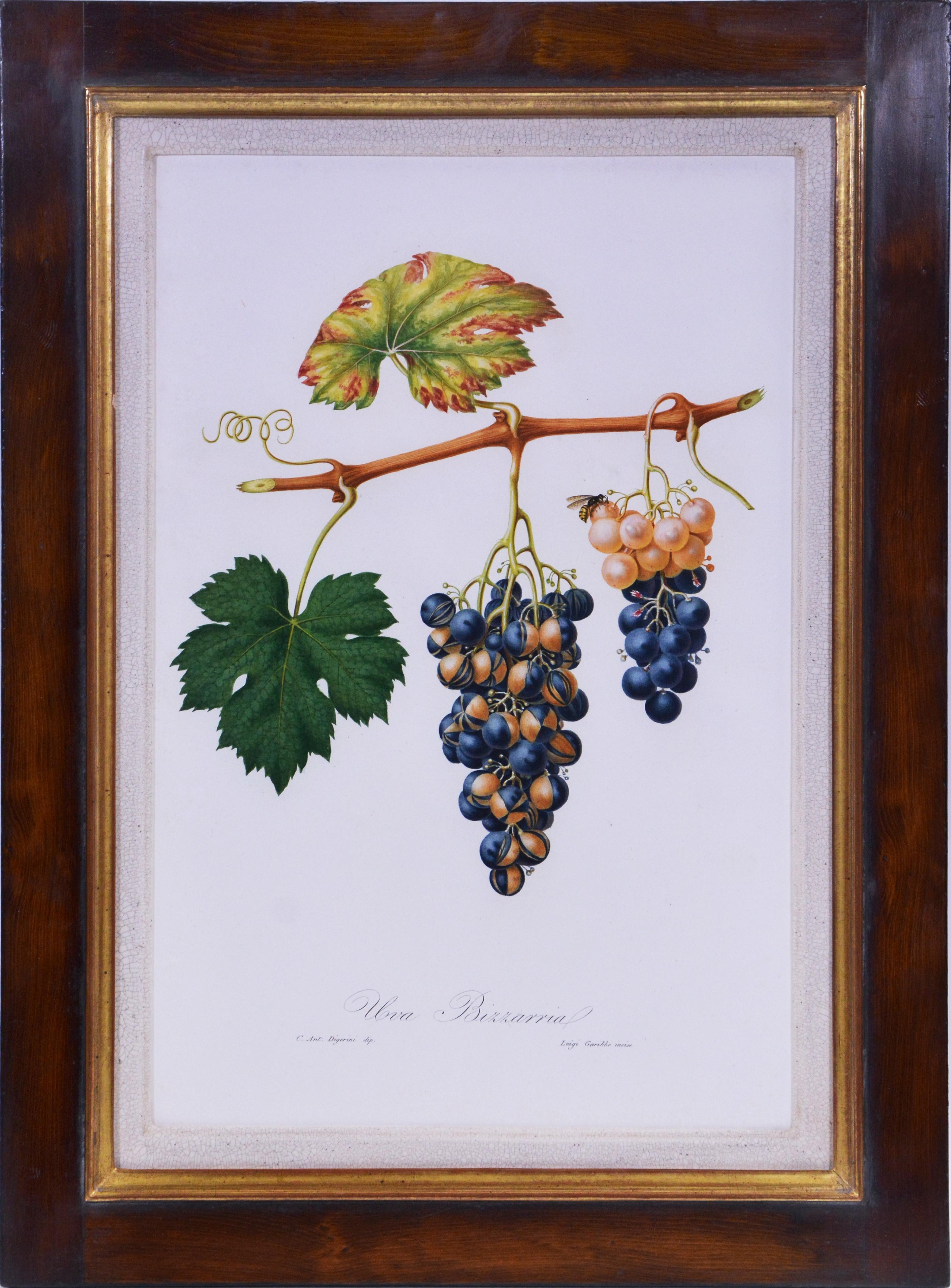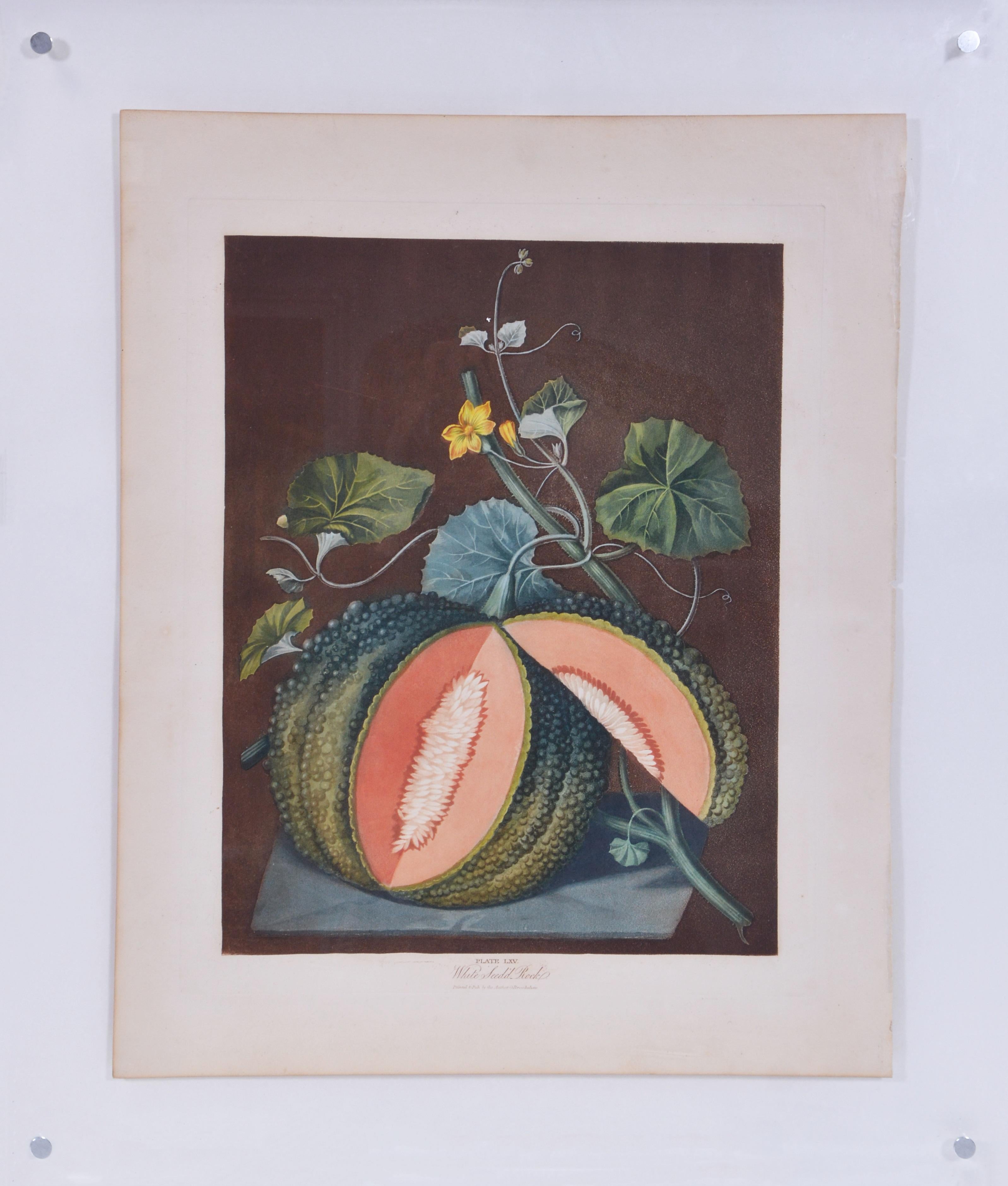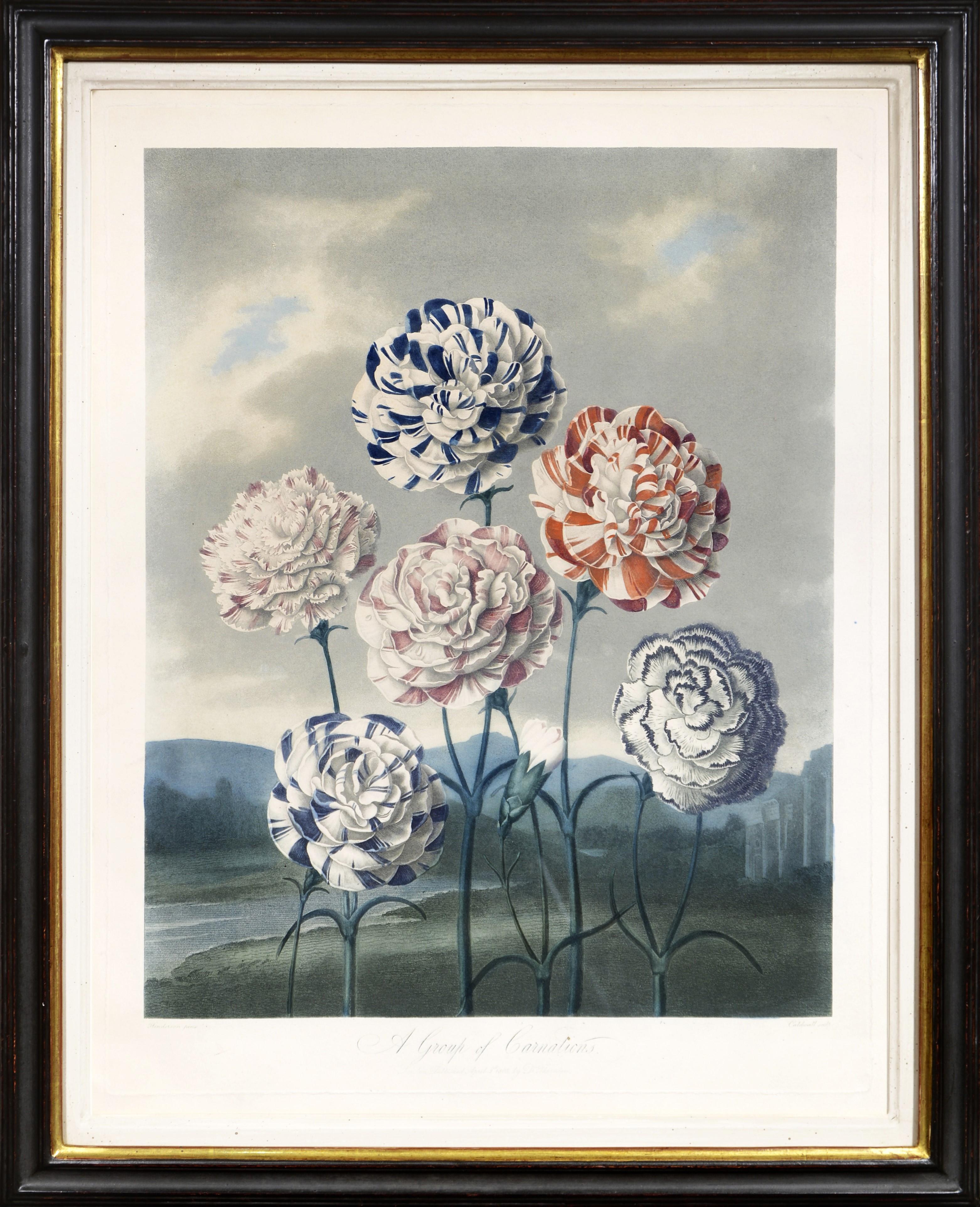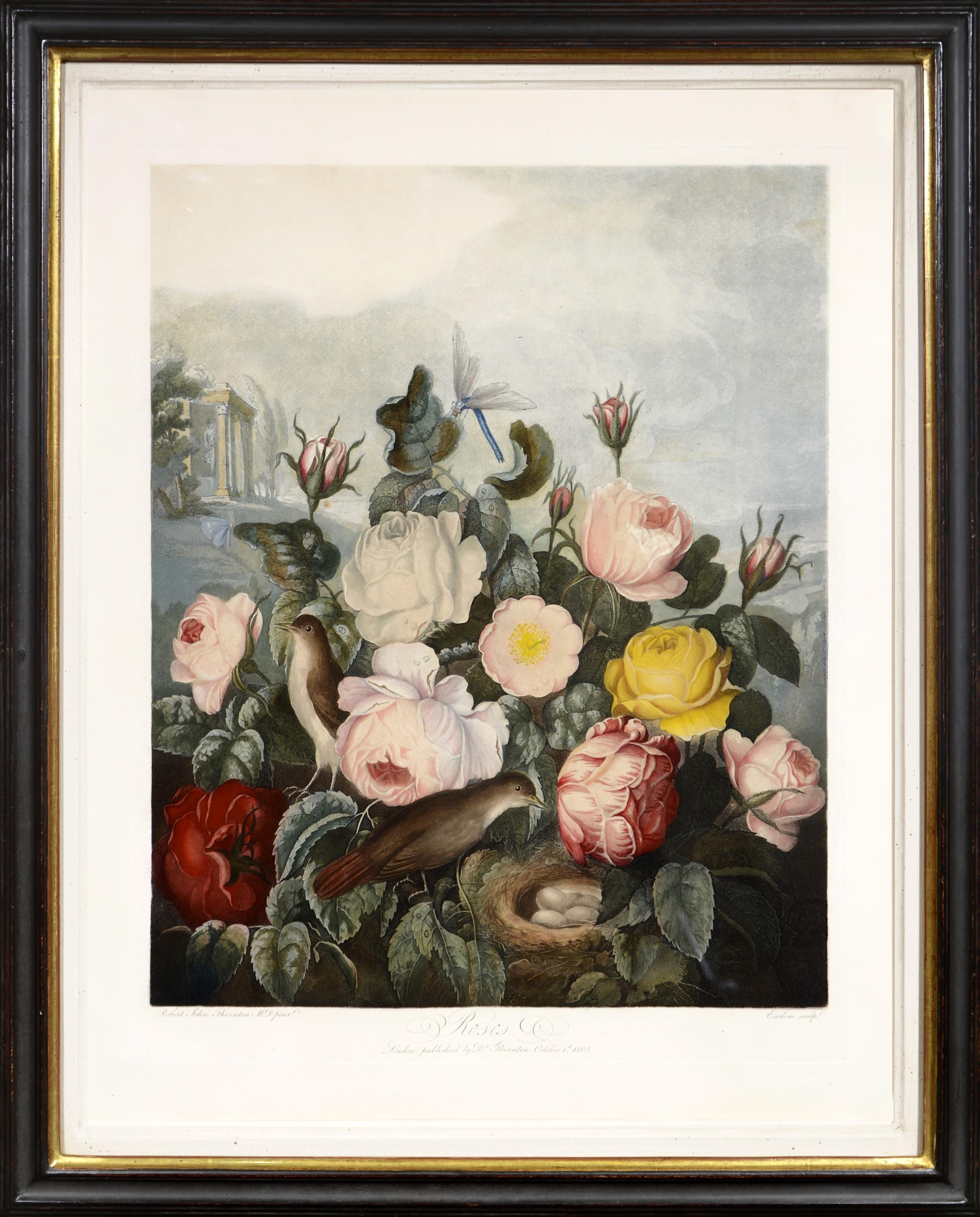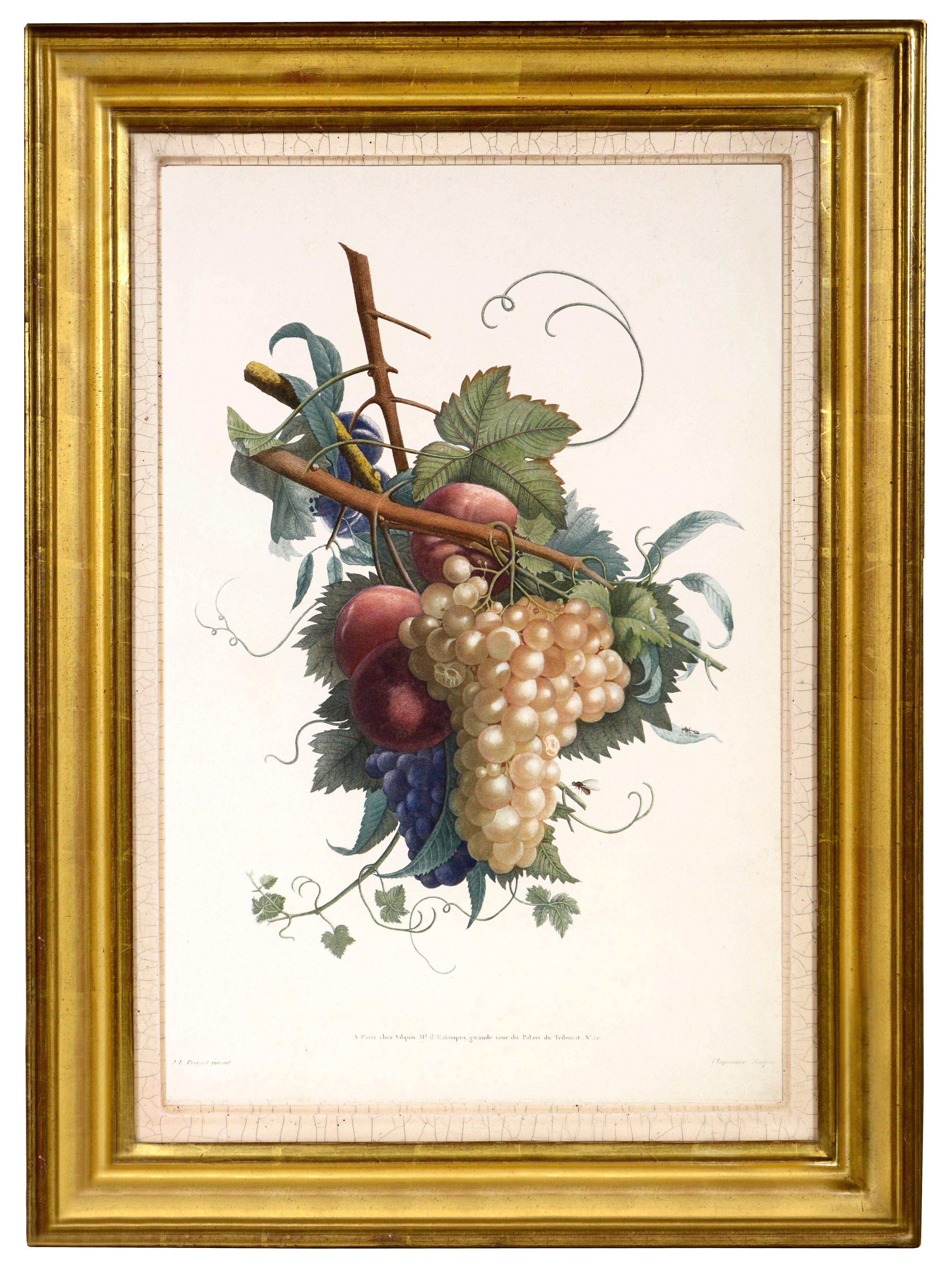Items Similar to BESLER. A Group of Four Peonies.
Want more images or videos?
Request additional images or videos from the seller
1 of 8
Basilius BeslerBESLER. A Group of Four Peonies.1640
1640
About the Item
Four magnificent copper engraved plates with hand-colour from "Hortus Eystettensis", one of the earliest and most famous works in the field.
[Nuremberg and Eichstatt, 1640].
The Hortus Eystettensis is a pictorial record of the flowers grown in the greatest German garden of its time, that of Prince Bishop of Eichstatt, Johann Conrad von Gemmingen.
The garden was begun by Joachim Camerarius in 1596 and, after his death in 1598, completed by Basil Besler, a pharmacist from Nuremberg. A visitor, Philipp Hainhofer, in 1611 marvelled at the eight gardens, each containing 'flowers from a different country; they varied in the beds and flowers, especially in the beautiful roses, lilies, tulips.'
The Hortus records this variety and beauty. The book is exceptional in every sense; in its variety and range of flowers, in its size, in its fine quality of engraving. It is also one of the earliest records of flowers from a specific, documented garden.
Besler was asked to complete the work by Gemmingen in 1606; the huge nature of the task was clear to Besler and he enlisted the help of his younger brother Hieronymus and Ludwig Jungermann, a nephew of Camerarius.
Printing the Hortus may have begun as early as 1607. Drawings were made in situ and from specimens sent by the Bishop to Nuremberg; the Bishop reported to Hainhofer that he had boxes of fresh flowers sent every week to Besler at Nuremberg for sketching. A team of at least 10 engravers were employed to translate the drawings to copperplates.
The gardens, along with most of the town of Eichstatt, were destroyed by the invading Swedish troops under Herzog Bernhard von Weimar in 1633-4, although they were partially restored by later bishops. Many of the original drawings survive in the University Library, Erlangen.
- Creator:Basilius Besler
- Creation Year:1640
- Dimensions:Height: 23.75 in (60.3 cm)Width: 20.16 in (51.2 cm)
- Medium:
- Movement & Style:
- Period:1640-1649
- Condition:Framed and Glazed in handmade silver frames. Overall dimensions: 51.2 x 60.3 cm.
- Gallery Location:London, GB
- Reference Number:
About the Seller
5.0
Vetted Seller
These experienced sellers undergo a comprehensive evaluation by our team of in-house experts.
Established in 1979
1stDibs seller since 2020
11 sales on 1stDibs
Typical response time: 1 hour
- ShippingRetrieving quote...Ships From: London, United Kingdom
- Return PolicyA return for this item may be initiated within 14 days of delivery.
More From This SellerView All
- GALLESIO. A Group of Six Grapes.Located in London, GBSix hand-coloured plates of Grapes, printed in colour and finished by hand. Framed and glazed, overall size: 42.5 by 57.5cm. Pomona Italiana Ossia Trattato Degli Alberi Fruttiferi...Category
1810s Naturalistic Still-life Prints
MaterialsEngraving, Handmade Paper
- REDOUTÉ. Musa paradisiaca - BananaBy Pierre-Joseph RedoutéLocated in London, GBStipple-engraved plate of Bananas printed in colours and finished by hand. [Chez l’Auteur, Paris, 1802] The highest peak of Redoute's artistic and botanical achievement... Among the most important monuments of botanical illustration ever to be published." (Frans A. Stafleu, "Redoute - peintre de fleurs" in A Catalogue of Redouteana). Redoute was at the height of his powers during the publication of Les Liliacees. It is easily the equal in accomplishment of its more popular successor, Les Roses. The work is broader than its title implies, including as it does petaloid monocotyledons in general belonging, for example to Commelinaceae, Bromeliaceae, Liliaceae, At this time, he had as patron and sponsor Josephine...Category
Early 1800s Naturalistic Still-life Prints
MaterialsEngraving, Handmade Paper
- BROOKSHAW. A Pair of Melons: White Seed'd Rock and Silver Rock MellonBy George BrookshawLocated in London, GBPair of aquatints with stipple-engraving, printed in colours and finished by hand, made for Brookshaw's most famous work "Pomona Britannica" or a "Collection of the Most Esteemed Fru...Category
1810s Naturalistic Still-life Prints
MaterialsAquatint, Handmade Paper, Engraving
- THORNTON. Group of CarnationsBy Dr. Robert John ThorntonLocated in London, GBMagnificent print by Robert John Thornton; aquatint and mezzotint, printed in colour and finished by hand, heightened with gum arabic, from The Temple of Flora. [London 1799] First ...Category
1790s Naturalistic Still-life Prints
MaterialsEngraving, Handmade Paper, Aquatint, Mezzotint
- THORNTON. The RosesBy Dr. Robert John ThorntonLocated in London, GBMagnificent print by Robert John Thornton. Aquatint and mezzotint, printed in colour and finished by hand, heightened with gum arabic, from The Temple of Flora. [London 1799] First state. Thornton was a prolific medical author and Doctor of Medicine, practicing at St Andrews University and licentiate of the Royal College of Physicians. However, he is best remembered for this great botanical publication The Temple of Flora, which formed a part of the larger work - New Illustration of the Sexual system of Linnaeus. In 1797, he also began advertising for subscribers to his planned natural history publishing venture, which eventually comprised of 30 folio botanical plates. For these remarkable illustrations, he engaged the services of the leading artists and engravers of his day: Sir William Beechey, James Opie, Henry Raeburn, John Russell, Philip Reinagle and others as painters; Francesco Bartolozzi, Richard Earlom and John Landseer. Most of the images were painted by Peter Charles Henderson and Philip Reinagle. These botanical illustrations are unique as they were the first flower prints with landscape backgrounds, depicting the natural habitat of the plant. The life-size flowers stand out dramatically and the whole effect is startlingly modern. Thornton's announced intention was to make this work the most magnificent tribute ever paid to the famous Swedish botanist Linnaeus by illustrating his Sexual System with the finest possible prints. All these were engraved on a larger scale than anything which had hitherto appeared and then were printed in colour, an expensive and uncommon method in England at this time. A brilliant effect. This rare and celebrated plate of the Roses...Category
1790s Naturalistic Still-life Prints
MaterialsEngraving, Handmade Paper, Mezzotint, Aquatint
- PRÉVOST. Print from Collection des Fleurs et des FruitsBy Jean Louis PrévostLocated in London, GBOriginal stipple engraving by Charles-Louis Ruotte, printed in colour and finished by hand. [Paris. 1805] Prévost came from a long line of French artists spanning 400 years. Jean-Louis himself first exhibited at the Salon when only fourteen years of age, showing paintings of bouquets, a vase of flowers and other small botanical studies. Immediately he was commissioned by Monsieur Roussel to paint the flowers in the wealthy landowner's garden. The result was a 12-volume work of gouache studies, entitled "Hortus Cellensis", and was at once acquired by the Paris Natural History Library. Prévost's "Collection des Fleurs et Fruits...Category
Early 1800s Naturalistic Still-life Prints
MaterialsEngraving, Handmade Paper, Color
You May Also Like
- Quivisia; Portesia /// Antique Botanical Botany Plants Science Engraving BuffonBy Georges-Louis Leclerc, Comte de BuffonLocated in Saint Augustine, FLArtist: Georges-Louis Leclerc, Comte de Buffon (French, 1707-1788) Title: "Quivisia; Portesia" (Octandreie, Monogynie, Plate 302) Portfolio: Histoire Naturelle Year: 1749-1789 Medium: Original Hand-Colored Engraving on laid paper Limited edition: Unknown Printer: Imprimerie Nationale, Paris, France Publisher: Georges-Louis Leclerc, Comte de Buffon, Paris, France Framing: Not framed, but beautifully double matted with hand decorated archival French matting...Category
2010s Naturalistic Still-life Prints
MaterialsWatercolor, Engraving, Laid Paper, Intaglio
- Atraphaxis (Shrub); Cabomba (Carolina Fanwort) /// Botanical Botany Plants ArtBy Georges-Louis Leclerc, Comte de BuffonLocated in Saint Augustine, FLArtist: Georges-Louis Leclerc, Comte de Buffon (French, 1707-1788) Title: "Atraphaxis (Shrub); Cabomba (Carolina Fanwort)" (Hexandrie, Digynie, Plate 265) Portfolio: Histoire Naturel...Category
1740s Naturalistic Still-life Prints
MaterialsWatercolor, Engraving, Laid Paper, Intaglio
- Picris (Sunflower); Helmintia (Bristly Oxtongue) /// Botanical Botany Plants ArtBy Georges-Louis Leclerc, Comte de BuffonLocated in Saint Augustine, FLArtist: Georges-Louis Leclerc, Comte de Buffon (French, 1707-1788) Title: "Picris (Sunflower); Helmintia (Bristly Oxtongue)" (Syngenesie; Polygamie, Plate 648) Portfolio: Histoire Na...Category
1740s Naturalistic Still-life Prints
MaterialsWatercolor, Engraving, Laid Paper, Intaglio
- Abolboda; Elodea (Waterweeds); Lepidosperma (Hoary Rapier-Sedge) /// BotanicalBy Georges-Louis Leclerc, Comte de BuffonLocated in Saint Augustine, FLArtist: Georges-Louis Leclerc, Comte de Buffon (French, 1707-1788) Title: "Abolboda; Elodea (Waterweeds); Lepidosperma (Hoary Rapier-Sedge)" (Triandrie Monogynie, Plate 905) Portfoli...Category
1740s Naturalistic Still-life Prints
MaterialsWatercolor, Engraving, Laid Paper, Intaglio
- Euphorbia (Spurge) /// Antique Botanical Botany Plants Engraving Buffon ScienceBy Georges-Louis Leclerc, Comte de BuffonLocated in Saint Augustine, FLArtist: Georges-Louis Leclerc, Comte de Buffon (French, 1707-1788) Title: "Euphorbia (Spurge)" (Dodecandrie, Trigynie, Plate 411) Portfolio: Histoire Naturelle Year: 1749-1789 Medium...Category
1740s Naturalistic Still-life Prints
MaterialsWatercolor, Engraving, Laid Paper, Intaglio
- Baccharis (Baccharises); Chrysocoma (Golden Bitter Bush) /// Botanical BotanyBy Georges-Louis Leclerc, Comte de BuffonLocated in Saint Augustine, FLArtist: Georges-Louis Leclerc, Comte de Buffon (French, 1707-1788) Title: "Baccharis (Baccharises); Chrysocoma (Golden Bitter Bush)" (Syngenesie; Polygamie, Plate 698) Portfolio: His...Category
1740s Naturalistic Still-life Prints
MaterialsWatercolor, Engraving, Laid Paper, Intaglio
